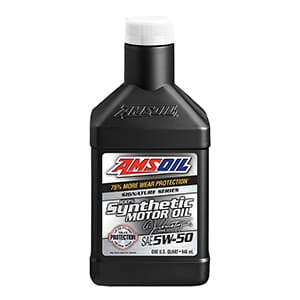Engine oil pumps are essential components ensuring the longevity and efficiency of car engines. They play a crucial role in maintaining appropriate oil pressure and lubricating internal components. A detailed look into the various types of oil pumps, their mechanisms, and how they impact the oil itself can offer car enthusiasts valuable insights into maintaining engine health.
Types of Oil Pumps

Gear Type Oil Pump
Gear type oil pumps are commonly found in older engines, such as the 350s. In this design, gears mesh together to transfer oil through the system. The action of the gears ensures consistent oil pressure but can stress the oil, requiring it to be robust enough to handle the mechanical forces at play.
Rotor Type Oil Pump
Rotor type oil pumps, also known as internal or gerotor pumps, feature an inner rotor and an outer rotor. As the inner rotor spins, it forces oil into a cavity, compresses it, and then pushes it out into the oil galleries. This type of pump is efficient and compact, making it a popular choice in modern engines.
Crescent Type Oil Pump
Crescent type oil pumps, named for the crescent-shaped spacer within, utilize an outer gear rotating around a stationary crescent. Oil flows into the large gaps created, then gets squeezed and pressurized as it moves through the narrowing space.
Function of Oil Pumps
Oil pumps are strategically placed at the bottom of the engine, where they can efficiently pick up oil from the sump. The primary function is to develop oil pressure and send oil through various oil galleries. This is crucial for lubricating all the bearings and moving parts within the engine. Proper lubrication reduces friction, minimizes wear and tear, and ensures optimal engine performance.

Rotor Type Oil Pump: Mechanism and Functionality
A rotor type oil pump operates through a simple yet effective mechanism. The inner rotor spins, drawing oil into the large gaps within the pump. As this rotor continues to rotate, the decreasing space compresses the oil, increasing pressure before it exits into the oil galleries. This process is efficient but requires robust oil to handle the stress and maintain consistent viscosity.
Gear Type Oil Pump: Common in Older Engines
Gear type oil pumps, although an older design, remain relevant due to their efficiency in creating pressure. The gears, typically found in engines like the 350s, rotate and mesh to move oil through the system. While effective, this type of pump can generate high shear forces on the oil, necessitating the use of high-quality lubricants capable of withstanding such stresses.
Oil Pump Challenges
Pressure Points and Shearing
Oil pumps, by their nature, create pressure points that can shear oil molecules. This shearing action reduces the viscosity of the oil, potentially degrading from a 30 weight to a 20 weight, which compromises its protective properties.

Heat Generation
Pumping oil generates significant heat, which can further affect the oil’s viscosity and overall performance. The oil used must be capable of withstanding these temperature changes to maintain engine protection and efficiency.
Effects of Oil Pumps on Oil
The design and operation of oil pumps create a chopping action that affects oil molecules. Over time, this can reduce the oil’s viscosity, impacting its ability to lubricate and protect engine components. A high-quality oil designed to be shear-resistant can mitigate these effects, maintaining its protective qualities for longer periods.

Importance of Strong Oil
To ensure an oil pump functions correctly without compromising the engine, the oil must be robust. This means the base oil itself must be extremely durable and present in the right amounts. A well-rounded product, like AMSOIL, is designed to handle the shearing forces within the pump while maintaining good oil pressure and lubrication properties.
Oil Composition for Pump Performance
The strength of the oil starts with its composition. High-quality base oils and additives must be blended in precise ratios to offer optimal performance. This ensures the oil can withstand the mechanical stresses and heat generated by the oil pump, providing consistent protection and performance.
Heat Generation in Oil Pumps
Heat is an inevitable byproduct of oil pump operation. The friction and pressure generated while pumping oil cause a rise in temperature, which can alter the oil’s viscosity. Quality oils are formulated to remain stable under these conditions, ensuring they continue to lubricate effectively.
Oil Requirements for Pump Function

For an oil pump to function properly and provide adequate lubrication:
- Heat Resistance: The oil must withstand the heat generated by the pump.
- Pressure Maintenance: The oil must maintain proper viscosity under pressure.
- Lubrication Properties: The oil must lubricate all engine components without breaking down.
Consequences of Oil Pump Failure
If an oil pump fails, oil pressure drops to zero, leading to catastrophic engine failure. Without proper lubrication, engine components can seize, resulting in extensive damage and expensive repairs.
Importance of Quality Oil
Using quality oil is paramount to the longevity and efficiency of an engine. AMSOIL offers products specifically designed to withstand the rigors of oil pump operation, maintaining optimal pressure and lubrication. For more information, visit bestengineoilintheworld.com.
Key Takeaways
- Oil pumps are critical to engine health, developing pressure and ensuring proper lubrication.
- Gear, rotor, and crescent are the primary types of oil pumps, each with unique mechanisms.
- High-quality oil is necessary to handle the stress and heat generated by oil pumps.
- Understanding the function and challenges of oil pumps can help in making informed decisions about engine maintenance and oil selection.
Engine enthusiasts must pay attention to their oil pump and lubrication choices to ensure their vehicle runs smoothly and efficiently for years to come.

